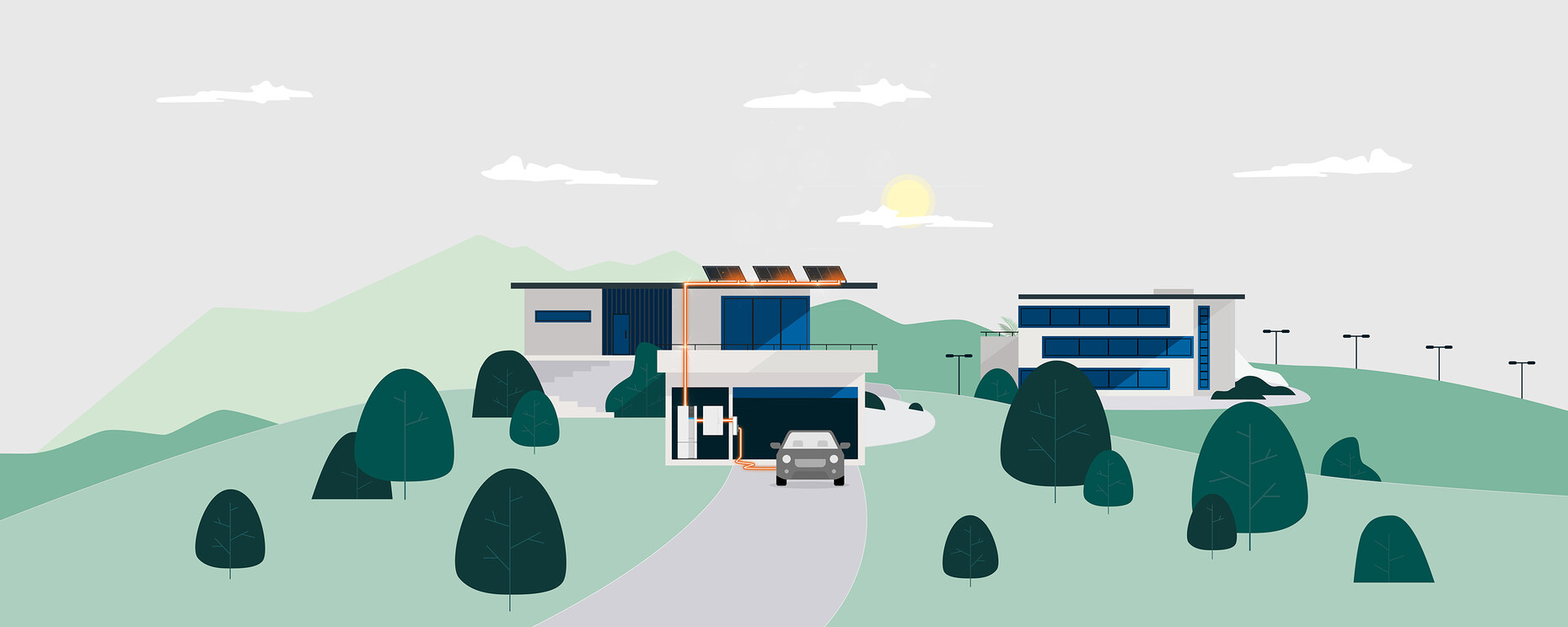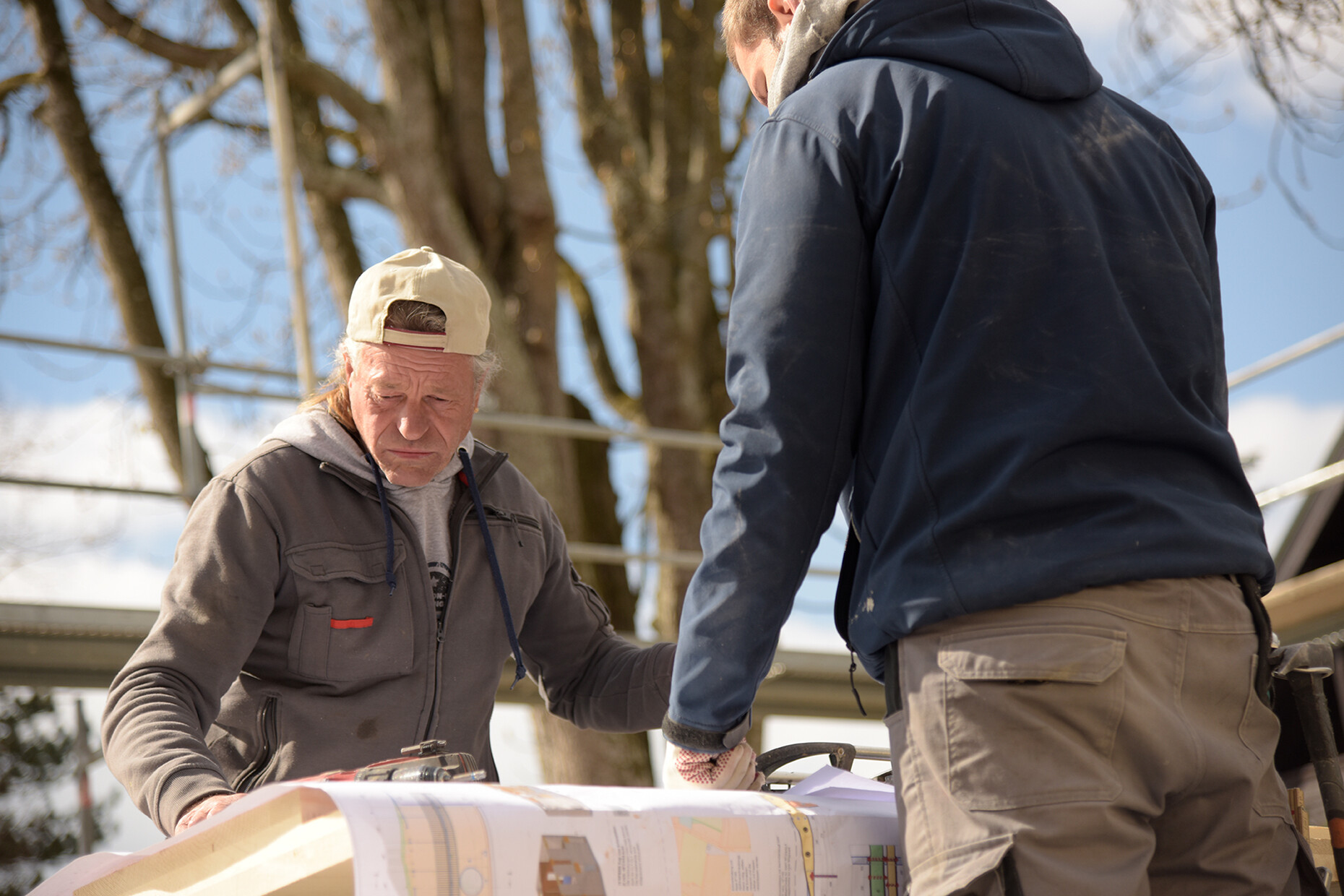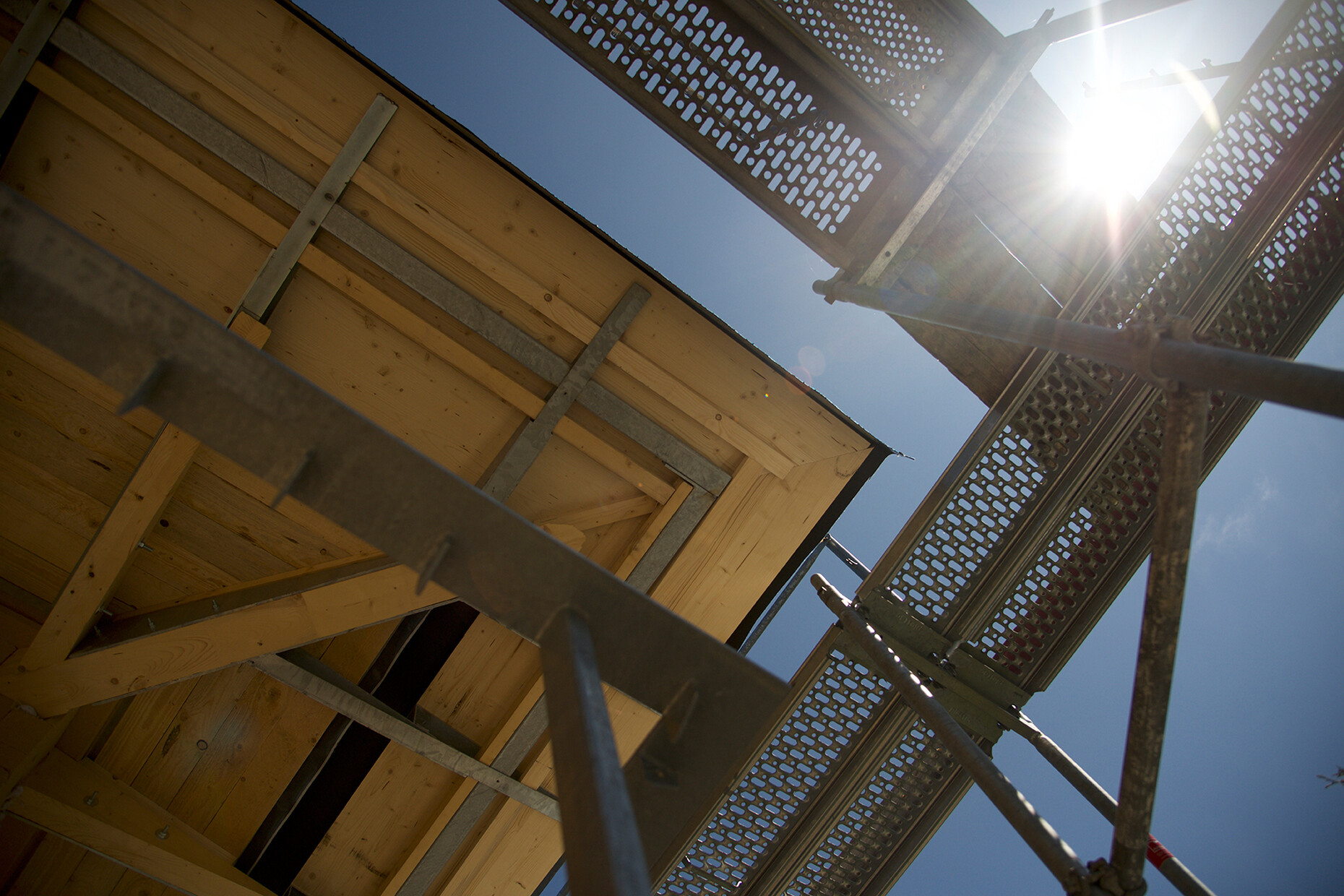Everything in the flow
The right package for every need: The "flow" energy management system from Hager is designed for detached and semi-detached houses and consists of several components that can be individually combined - such as the energy manager, the energy storage unit and the optionally available "witty flow" charging station. This way, homeowners can consume the generated electricity themselves and reduce the need to purchase electricity from the grid. "flow" is designed as an all-in-one system, which means that the individual components are precisely coordinated with each other. This provides architects with a uniform building technology that can be integrated into the planning at an early stage.
The energy manager serves as a control centre that networks all components and optimises electricity consumption in the household: It offers energy monitoring and visualisation, load control and the integration of renewable energies. Hager has also thought about easy integration, because thanks to its compact size of four space units, it can be easily inserted into the respective technical centre. It is also possible to integrate "flow" as an IoT device into the domovea building control system. There, the data from the energy manager is displayed in real time, and a heat pump can be integrated into the app. In addition, there is the expandable energy storage of "flow", which can be recharged with solar energy and supplies 100 percent replacement power when needed. This means that homeowners can not only operate their photovoltaic system independently, but are also perfectly prepared in the event of a power grid failure. With the "witty solar" charging station, the e-car is supplied in parallel from surplus and storage power or with grid support. Here, the "flow" app from Hager offers various control options - such as diverse charging mode settings, a scheduler function and a boost mode for charging with maximum load.
A good example of the use of "flow" is the Arnold House in Utting on Lake Ammersee. There, the Munich architect Sascha Arnold of Arnold/Werner Architekten designed a 200-square-metre low-energy house for himself and his family. The project is modelled on the 1958 home of the Japanese architect Kenzo Tange: the wide cantilevered flat aluminium hipped roof, which is laid over a wooden construction of glulam elements, serves as protection from the sun and the weather. A sustainable feature is the photovoltaic system, whose electricity yield is controlled with the help of "flow". The latter connects the solar system with the heat pump, the energy storage unit and the charging station to form an energy-efficient complete system. "I want a resource-saving house that lasts as long as possible, is as self-sufficient as possible and uses as many organic materials as possible. It's about getting the maximum sustainability out of it. Not only for us, but also for our clients, to whom we want to show what is possible using our house as an example," Sascha Arnold explains the concept for the building.
To this end, the architect pursues a mixture of traditional construction methods and current building technology, which he wants to harmonise. Accordingly, he sees his own residential building as a research object that is a possible model for later projects of his architectural office. "In any case, we didn't learn any of this at university 20 or 30 years ago. At the same time, a lot is happening in this field at the moment - fortunately, I must say. As an architect, you therefore have to turn into a kind of sponge and soak up everything that is available in terms of information and solutions. And you have to look for competent partners like Hager, who take a good part of the complexity off your hands," says Sascha Arnold about the implementation of his sustainability concept.
The construction of the residential building, which started in February 2023, is documented by Hager in the form of a video diary. In it, Sascha Arnold provides insights into the project, the construction process and his ideas of sustainable architecture. At the same time, the series aims to show what architects and builders need to pay attention to in climate-positive building.
FREE WEBINARS
In addition to the video diary, Hager offers 60-minute architect webinars that present the "flow" energy management system, a cost/benefit calculation and various application examples and funding opportunities for sustainable building.












